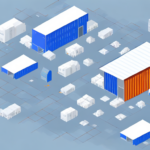Priority ERP vs SAP Business One: Comprehensive Comparison for Your Business
Choosing the right Enterprise Resource Planning (ERP) software is critical for businesses aiming to streamline their operations and enhance efficiency. Among the top contenders in the market, Priority ERP and SAP Business One stand out. This article provides an in-depth comparison of these two platforms, examining their features, pricing structures, usability, customer support, deployment options, and suitability for different business sizes. By the end, you'll have a clearer understanding of which ERP solution aligns best with your business needs.
Understanding Priority ERP and SAP Business One
What is Priority ERP?
Priority ERP is a robust ERP solution that offers a wide range of functionalities, including supply chain management, inventory control, financial management, and business analytics. Its flexibility and ease of integration make it a favorable choice for businesses looking to customize their ERP systems to fit specific operational requirements. Priority ERP is known for its user-friendly interface and real-time data processing capabilities, enabling businesses to make informed decisions swiftly.
What is SAP Business One?
SAP Business One is a comprehensive ERP solution tailored for small to mid-sized enterprises. It encompasses various modules such as Customer Relationship Management (CRM), financial management, inventory management, and production planning. SAP Business One is celebrated for its scalability, allowing businesses to expand their ERP capabilities as they grow. Additionally, its seamless integration with other SAP products provides a unified platform for comprehensive business management.
Key Features Comparison
Priority ERP Features
- Supply Chain Management
- Inventory Management
- Financial Management
- Billing and Invoicing
- Asset Management
- Project Management
Priority ERP excels in streamlining complex business processes with its advanced supply chain and financial management tools. Its open architecture allows for easy integration with third-party applications, enhancing overall business efficiency. Mobile accessibility ensures that users can manage operations on the go, a crucial feature for businesses with remote teams.
SAP Business One Features
- Financial Management
- Inventory Management
- Customer Relationship Management (CRM)
- Production Management
- Built-in Analytics and Reporting
- Mobile App Support
SAP Business One is renowned for its powerful analytics and reporting capabilities, which provide actionable insights into business performance. The user-friendly interface and robust CRM functionalities make it easier for businesses to manage customer interactions and drive sales growth. Additionally, multi-currency support caters to businesses with international operations.
Pricing Models: Which Offers Better Value?
Priority ERP Pricing
Priority ERP offers a flexible pricing model tailored to the specific needs of each business. This approach allows companies to select only the modules they require, ensuring that they pay for what they use. Additionally, Priority ERP provides a lifetime license option, which can be cost-effective in the long run.
SAP Business One Pricing
SAP Business One typically bases its pricing on the number of users and the features required. While it may have a higher initial cost compared to Priority ERP, SAP Business One offers scalable pricing that grows with your business. However, it requires an annual subscription fee, which can add up over time.
For businesses evaluating cost vs. benefits, it's essential to consider not just the upfront costs but also the long-term financial commitment associated with each ERP solution.
Integration Capabilities
Integrating Priority ERP
Priority ERP's open architecture enables seamless integration with a variety of third-party software, including CRM systems, eCommerce platforms, and HR tools. This flexibility ensures that businesses can create a cohesive technology ecosystem that supports their unique processes.
Integrating SAP Business One
SAP Business One offers robust integration with other SAP products such as SAP HANA and SAP Analytics Cloud. Additionally, it provides APIs for developers to integrate with other software solutions, facilitating a unified data environment across different business functions.
The choice between Priority ERP and SAP Business One integration capabilities largely depends on your existing software infrastructure and future integration needs.
Usability and User Interface
Priority ERP User Experience
Priority ERP features an intuitive and customizable user interface, allowing businesses to tailor dashboards and reports to their specific needs. The user-friendly design reduces the learning curve, enabling employees to adopt the system quickly and efficiently.
SAP Business One User Experience
SAP Business One boasts a modern, easy-to-navigate interface with a powerful search functionality, making it simple for users to access necessary information rapidly. While its customization options are somewhat limited compared to Priority ERP, the overall user experience remains highly efficient and productive.
Customer Support and Resources
Priority ERP Support
Priority ERP provides comprehensive customer support through multiple channels, including phone, email, and live chat. Additionally, an extensive knowledge base and community forums are available to help users troubleshoot common issues and share best practices.
SAP Business One Support
SAP Business One delivers reliable customer support via phone and email, complemented by a detailed online knowledge base. While it may lack live chat options, SAP's extensive documentation and support resources ensure that users can find solutions to their queries effectively.
Deployment Options: On-Premises vs. Cloud
Both Priority ERP and SAP Business One offer flexible deployment options to cater to diverse business needs:
- On-Premises: Hosting the ERP software on your own servers provides greater control over data security and customization.
- Cloud-Based: Cloud deployment offers scalability, reduced IT overhead, and easier access from multiple locations, making it ideal for businesses aiming to minimize maintenance responsibilities.
Cloud-based deployment is generally preferred for its flexibility and cost-effectiveness, especially for businesses looking to scale operations without significant infrastructure investments.
Suitability for Different Business Sizes
Small Businesses
SAP Business One is particularly well-suited for small businesses due to its affordability, ease of use, and robust analytics tools. It enables small enterprises to manage their operations efficiently without the need for extensive upfront investments.
Medium-Sized Businesses
Both Priority ERP and SAP Business One cater to medium-sized businesses effectively. Priority ERP is ideal for those requiring advanced supply chain management and financial functionalities, while SAP Business One offers powerful analytics and user-friendly interfaces that facilitate operational efficiency.
Large Enterprises
Priority ERP is better suited for large enterprises due to its comprehensive feature set and high level of customization. Its advanced supply chain and finance management capabilities address the complex needs of large organizations, ensuring scalability and efficiency.
Pros and Cons
Priority ERP
Pros:
- Comprehensive feature set tailored to various business needs
- Highly customizable and flexible
- Advanced supply chain and financial management tools
- Lifetime licensing option
Cons:
- Can be complex, requiring significant training
- Potentially higher costs for small businesses
SAP Business One
Pros:
- Intuitive and user-friendly interface
- Scalable pricing suitable for growing businesses
- Powerful analytics and reporting capabilities
- Robust CRM functionalities
Cons:
- Limited customization compared to Priority ERP
- Additional licensing fees for certain features
Real-World Applications: Success Stories
Priority ERP Success Case
Apax Group, a leading private equity firm, successfully implemented Priority ERP to manage its diverse portfolio and streamline internal processes. The ERP system enhanced their data analysis, reporting, and invoicing capabilities, leading to improved operational efficiency and better decision-making.
SAP Business One Success Case
McMullan Import Group, an Australian homewares supplier, leveraged SAP Business One to optimize its operations and enhance inventory management. The adoption of SAP Business One resulted in reduced operational costs and improved order processing times, contributing to overall business growth.
Final Thoughts: Choosing Between Priority ERP and SAP Business One
Both Priority ERP and SAP Business One offer robust ERP solutions tailored to different business needs. Priority ERP is ideal for large enterprises seeking a highly customizable and comprehensive system with advanced supply chain and financial management capabilities. In contrast, SAP Business One is well-suited for small to mid-sized businesses looking for an affordable, user-friendly solution with powerful analytics and reporting tools.
When selecting an ERP system, consider factors such as your business size, budget, specific feature requirements, and long-term scalability. Evaluating these aspects will help you choose the ERP solution that best aligns with your business objectives and fosters sustainable growth.






















